7 things we'd like to see on Microsoft's Surface Pro 4
Making a great hybrid even better

What's ahead
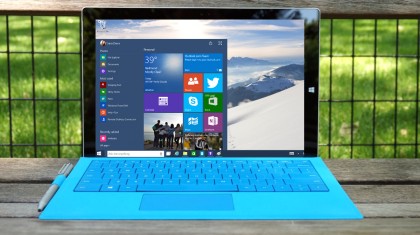
Microsoft's next big event is right around the corner – October 6, if you're keeping track – and we're expected to finally get a look at what the tech giant has been cooking up in the hardware department. One of the most anticipated announcements is that of the follow up to last year's Surface Pro 3, the Surface Pro 4.
The Surface Pro 3 has been widely regarded as one of the best hybrids for the business crowd since its debut last year. And from its full PC experience packed into a portable form factor to the Surface Pen and its attractive industrial design, it's no wonder the tablet comes highly recommended. However, that doesn't mean that there's no room for improvement, so let's take a look at what we'd like to see out of the upcoming Surface Pro 4.
1. Two sizes
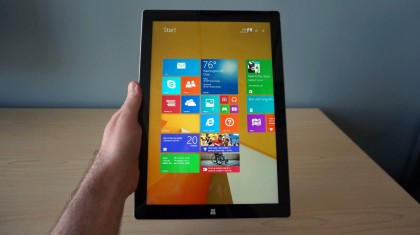
Last year's Surface Pro 3 stepped things up a notch, bumping the screen size up to a solid 12-inches from the 10-inch displays that its forbearers sported. This was a great move that brought the Surface Pro line closer to being a laptop replacement for many, and it's likely one of the reasons it stepped into the arena of serious productivity devices.
That being said, we'd like to see Microsoft take things a step further just to achieve some more variety on the upper end of the equation. Recent rumblings have stated that Microsoft may be working on a 14-inch variant of the Surface Pro 4, essentially creating two tiers of the same device. Such a move would give serious users a portable multitasking powerhouse, and it would plant Microsoft in a prime position to combat Apple's recently-announced 12.9-inch iPad Pro, not to mention other larger slates on the market.
2. Go fanless with Skylake
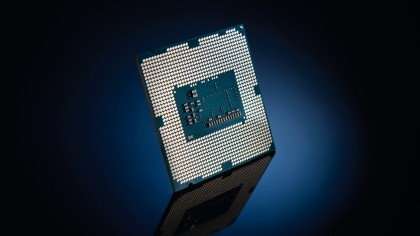
It's almost a foregone conclusion by now that the Surface Pro 4 will use Intel's latest processors, built on the so-called Skylake architecture. What isn't certain, however, is whether Microsoft will stick with the typical i-series, or if it will opt for the Core M line.
The distinction is important because the Core M line would definitely allow for Microsoft to ditch the fan inside of the Surface Pro 4, cutting down on noise and allowing more room inside of the chassis for other components. Of course, there's a chance Microsoft could surprise us with a fanless i5 or i7 model, but managing the heat output in such a device would be a feat.
3. Battery life and micro USB
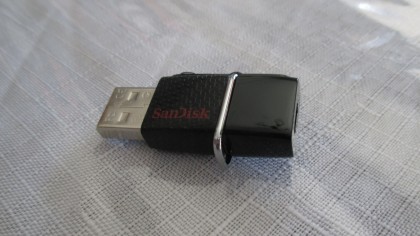
This almost goes without saying, and it's on the wish list of every major gadget refresh, but the Surface Pro 4 would benefit greatly from an increase in battery life over its predecessor. Microsoft claims that the Surface Pro 3 can endure 9 hours of web browsing, but our slightly more intense tests clocked it in at right around 4 hours. As a device that's meant to be the go-to for some serious work tasks, we'd like to see a couple of hours added to that tally.
Sign up to the TechRadar Pro newsletter to get all the top news, opinion, features and guidance your business needs to succeed!
And while we're on the topic of batteries, we'd like to see Microsoft shift to a different charging port standard for the Surface Pro 4: micro USB. The Surface Pro 3's current magnetic connector is certainly handy, but it ultimately means carrying yet another proprietary cable on business trips. Microsoft already made the switch to micro USB with its Surface 3 released earlier this year, and we'd like to see that decision carried forward to the Surface Pro 4 - if only to cut down on cable bloat.
4. Increased storage
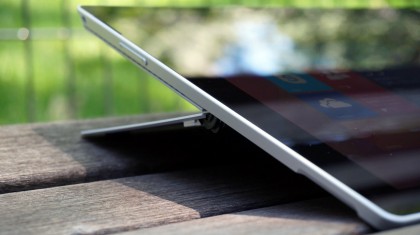
The Surface Pro 3 currently offers storage options ranging from 64GB to a whopping 512GB. Unfortunately, in order to get the spacious 512GB option, you have to move up to the very top end of the model spectrum, which means you may end up spending more than you'd like. This is fine if you absolutely need the performance of the Core i7 processor and 8GB of RAM in the highest-end model, but it leaves many stuck with less space than they'd like.
Overall, the current processor and RAM spread works out well between the different models, but we'd like to see Microsoft spread the love with a 512GB storage option for the Core i5 and i3 models. Although you absolutely could and should rely on the cloud to keep important files in sync, nothing beats the feeling of knowing you aren't in danger of running out of local storage.
5. Windows Hello support

One of the big new features of Windows 10 for enterprise users was the addition of the secure login framework, dubbed Windows Hello. However, to use Windows Hello for secure logins, your Windows 10 machine has to be equipped with a compatible camera or fingerprint scanner.
Given that the Surface Pro 4 will be landing in the same year as Microsoft's latest operating system, it would make sense to support all of its new features out of the box. Thus, the addition of a Windows Hello compatible fingerprint scanner or camera would be a fantastic security upgrade for business users. The only real barrier to entry here would be fitting the relatively bulky RealSense camera hardware from Intel into the chassis, but we've already started to see a number of laptops that pull this off.
6. LTE
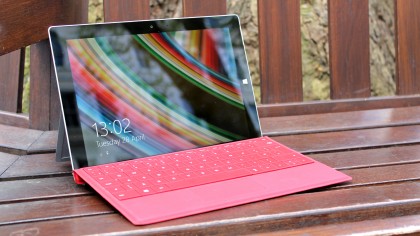
Of all the items gracing this Surface Pro 4 wish list, this is probably the most important. LTE connectivity was sorely lacking from the Surface Pro 3, and Pro users got a slight slap in the face when it appeared on the slate's smaller, less capable sibling, the Surface 3, earlier this year.
If you're a serious business user on the go, the Surface Pro can be great for getting work done wherever you are. Unfortunately "wherever you are" doesn't always include an accessible Wi-Fi connection. Sure, you can get by with an LTE hotspot, but that's yet another device you have to carry around at all times, making for a bit of a clunky experience. Considering Microsoft is about to get some added competition in the enterprise-focused tablet space with Apple's LTE-capable iPad Pro later this year, and it feels like it's high time for Microsoft to get on board the LTE train.
7. Consistent design

Finally, it's important that Microsoft keeps consistent with its design language in the jump from Surface Pro 3 to Surface Pro 4. Yes, the industrial design of the Surface family is certainly very attractive and functional, but this is more about accessory compatibility.
Considering the investment that many have already made in Surface Pro 3-compatible keyboard covers and docks, a shift in design that would disrupt the ability to use these accessories with the Surface Pro 4 would be extremely frustrating for users. Thankfully, Microsoft seems to be aware of this, going by comments made by the company's general manager for the Surface Line, Brian Hall. What remains to be seen, however, is how a potential larger Surface Pro 4 may fit into this plan.